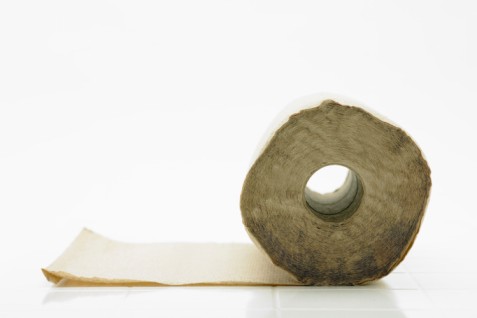Paper towels that pack a punch against bacteria

Of the three ways we can dry our hands after scrubbing down, the paper towel method tends to be the most hygienic. When I asked chemical engineering professor and chair Tom Webster how this could possibly be, he told me that air dryers can actually blow bacteria onto other surfaces, causing further contamination down the line. So as we walk away all shimmery and dry, bacterial colonies begin to fester on the nearby sinks and paper towel racks we leave behind.
Nonetheless, other experiments have shown that participants actually walk away with more bacteria on their hands when they dry with paper towels than before they even washed up. You can imagine where this might become an issue in places like the doctor’s office, hospitals, and restaurants.
I went to the doctor the other day and they made me put on a dorky blue mask the second I told them I was getting over a cough. They do everything they can, but some things are currently beyond control.
Paper towels collecting in waste bins can start to form so-called biofilms, or impenetrable coatings of bacteria. For this reason, Webster decided to apply his work developing anti-microbial medical devices to paper towels. He and his team coated paper towel fragments with nanoparticles of selenium, a non-metallic element. “We have seen that selenium interferes with proteins inside the bacteria causing them to die,” said Webster, referring to previous work.
The coated paper towels managed to stave off 90 percent of bacterial growth after 72 hours compared with uncoated towels, according to Webster’s recently published paper in the journal Journal of Nanomedicine.
Other researchers have attempted to design a similar product using things like silver nanoparticles, zinc oxide and even graphene, a single-atom-thick layer of carbon atoms precisely arranged. But each of these also brought along problems of expense and toxicity. The graphene towels caused 20 percent of mammalian cells to die after just two hours. And, well, what is there to say about a silver-coated paper towel? Probably something having to do with princesses.
Webster’s team has estimated that the selenium towels wouldn’t cost any more than normal towers. In the case of medical devices like catheters, which they are also working on, the additional costs are minor. And since mammalian cells actually need selenium to function properly, toxicity isn’t an issue. Finally, in that ongoing debate about antimicrobial resistance, Webster assured me that selenium is likely not to become a culprit. “This is because selenium acts in a different mechanism than antibiotics to kill bacteria,” he explained.






